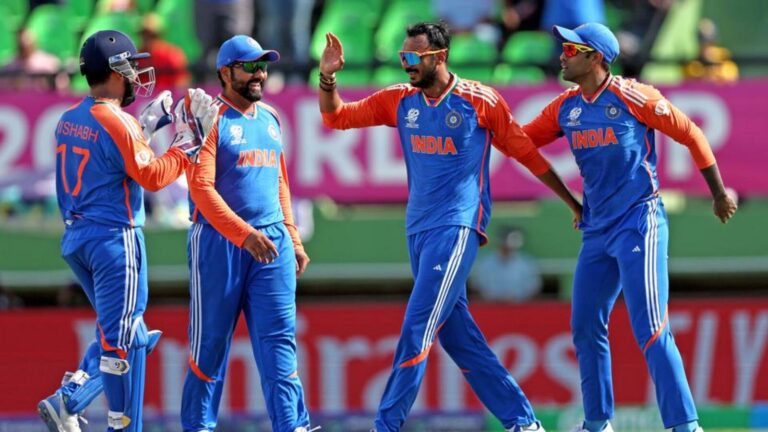Exploring Cricket’s Contribution to Sports Journalism and Broadcasting
Gold365, Play99exch: Cricket coverage in media has come a long way from its humble beginnings. In the early days, cricket matches were reported through newspapers, with limited details and delayed updates. As the popularity of the sport grew, so did the demand for more extensive coverage, leading to the emergence of radio broadcasts providing live match updates and commentary.
The introduction of television revolutionized cricket coverage, allowing fans to witness the action unfold in real-time. The visuals brought a new dimension to the way matches were experienced, with commentators adding value by providing insights and analysis. The evolution of technology further enhanced the viewing experience, with high-definition broadcasts, multiple camera angles, and advanced graphics becoming standard in cricket coverage.
The Role of Cricket in Shaping Sports Journalism
Cricket has played a pivotal role in shaping the landscape of sports journalism over the years. The game’s rich history, diverse narratives, and passionate fan base have provided ample material for journalists to delve into and offer unique insights to their audiences. Through in-depth analysis, player interviews, match reports, and feature stories, cricket journalism has transformed into a dynamic field that continues to evolve.
The meticulous attention to detail and strategic thinking involved in cricket coverage have set a high standard for sports journalism as a whole. Journalists covering the sport are tasked with not only reporting on the matches but also interpreting the nuances of the game for their audience. This level of intricate analysis has influenced the way sports journalists across various disciplines approach their work, emphasizing the importance of capturing the essence of the sport beyond the surface level.
Cricket’s Impact on Broadcasting Technology
Cricket matches have played a pivotal role in advancing broadcasting technology over the years. The demand for higher quality broadcasts and viewers’ desire for better visual experiences has driven advancements in camera technology, allowing for sharper images and more nuanced perspectives of the game. From the use of innovative camera angles to slow-motion replays, cricket broadcasting has pushed the boundaries of what is possible in capturing live sports action.
Moreover, the introduction of high-definition and ultra-high-definition televisions has revolutionized the way cricket matches are viewed by fans around the world. The crystal-clear images and immersive sounds have elevated the viewing experience, bringing spectators closer to the action on the field. As broadcasting technology continues to evolve, cricket coverage is set to become even more engaging and interactive, shaping the way fans consume the sport for years to come.
Famous Cricket Commentators and Analysts
Cricket has been graced by some of the most iconic voices in sports commentary, with luminaries such as Richie Benaud, Tony Greig, and Bill Lawry becoming synonymous with the game. These legendary figures brought a blend of insight, wit, and passion to their commentary, enhancing the viewing experience for cricket fans around the world. Their ability to capture the mood of a match, analyze the nuances of play, and provide historical context set the standard for cricket broadcasting for generations to come.
In the modern era, commentators like Ian Bishop, Harsha Bhogle, and Michael Holding have continued the legacy of excellence, bringing their own unique perspectives and expertise to the commentary box. Their deep understanding of the game, coupled with their articulate delivery and engaging storytelling, have endeared them to audiences globally. From describing the action on the pitch to delving into the strategic intricacies of the sport, these commentators and analysts play a crucial role in enriching the cricketing experience for fans across different formats and platforms.
Cricket’s Influence on Sports Reporting Techniques
Cricket has played a significant role in shaping sports reporting techniques over the years. The sport’s rich history and complex nature have provided journalists with ample opportunities to develop new ways of analyzing and dissecting the game. From in-depth match analysis to player interviews, cricket reporting has set a high standard for sports journalism worldwide.
Cricket’s influence on sports reporting techniques can be seen in the meticulous attention to detail and statistics that journalists employ when covering the game. The use of data and analytics has become a norm in cricket reporting, allowing journalists to provide viewers with a more comprehensive understanding of the sport. Additionally, the constant evolution of technology has enabled reporters to deliver real-time updates and insights to audiences, further enhancing the overall viewing experience.
The Global Reach of Cricket Broadcasting
Cricket broadcasting has transcended borders and reached audiences far beyond its traditional strongholds. The sport’s global appeal has led to an increase in international coverage, with matches being broadcasted in multiple countries simultaneously. This widespread dissemination of cricket content has not only expanded the game’s viewership but has also facilitated cultural exchanges and fostered a sense of unity among fans worldwide.
The advent of digital platforms and streaming services has further amplified the global reach of cricket broadcasting. Fans now have access to live matches, highlights, and analysis on their smartphones and devices, enabling them to stay connected with the sport anytime, anywhere. This digital revolution has broken down geographical barriers, allowing cricket enthusiasts to engage with the game on a truly global scale and has changed the way cricket is consumed and experienced across the world.
Cricket’s Contribution to Live Coverage Innovations
In the realm of sports broadcasting, cricket has been a key player in driving innovation in live coverage. With the advent of technologies such as high-definition cameras, slow-motion replays, and Hawkeye technology, cricket coverage has evolved to provide viewers with a more immersive and detailed viewing experience. These technological advancements have not only enhanced the quality of broadcasts but have also revolutionized the way fans engage with the sport.
Furthermore, the introduction of spider-cameras and on-screen graphics has added a new dimension to cricket coverage, allowing viewers to see the action from unique angles and providing in-depth analysis of key moments in the game. The use of advanced statistical analysis tools in live broadcasts has also enriched the viewing experience, offering insights into player performances and game strategies in real-time. Cricket’s contribution to live coverage innovations has not only elevated the standards of sports broadcasting but has also set a benchmark for other sports to follow suit.
The Intersection of Cricket and Digital Media
As the digital landscape continues to expand, cricket has found itself at the forefront of engaging audiences through various online platforms. Social media plays a significant role in shaping the way cricket is consumed by fans, with platforms like Twitter, Instagram, and Facebook providing real-time updates, highlights, and interactive content. These platforms not only allow fans to stay connected with their favorite teams and players but also offer a space for discussions, debates, and insights from experts and enthusiasts alike.
Additionally, with the rise of streaming services and online channels, cricket fans now have more options than ever to access live matches, analysis, and behind-the-scenes content. This shift towards digital media has not only enhanced the viewing experience but has also opened up new avenues for cricket journalists, commentators, and analysts to reach a global audience instantly. The interactive nature of digital media has transformed the way cricket is consumed, making it more accessible and engaging for fans around the world.
Cricket’s Effect on Television Ratings and Viewership
Television ratings for cricket matches have been steadily increasing over the years, showcasing the sport’s ability to captivate audiences globally. The allure of witnessing thrilling matches, incredible displays of athleticism, and intense rivalries on TV has drawn in viewers of all ages and backgrounds. As a result, cricket has become a prominent fixture in the television schedules of many broadcasters, contributing to higher viewership numbers and ratings.
The accessibility of cricket broadcasts on various platforms such as cable TV, satellite TV, and online streaming services has also played a significant role in boosting television ratings. Fans can now tune in to watch their favorite teams and players from anywhere in the world, increasing the reach of cricket broadcasts. This widespread availability has led to a surge in viewership, solidifying cricket’s position as one of the most-watched sports on television.
Challenges and Opportunities in Cricket Journalism Today
As cricket journalism continues to evolve in the digital age, professionals in the field face various challenges and opportunities. One of the key challenges is maintaining credibility and transparency in an era of fast-paced news cycles and social media influence. With the rise of citizen journalism and online forums, ensuring accurate and reliable reporting remains a constant struggle for cricket journalists.
On the other hand, the digital landscape also presents exciting opportunities for cricket journalism. Platforms such as social media, podcasts, and online blogs provide new avenues for journalists to engage with audiences and deliver content in innovative ways. Additionally, the ability to reach a global audience instantaneously through online platforms enhances the scope and impact of cricket journalism in today’s interconnected world.






